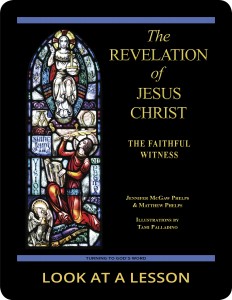parousia
 The liturgical season of Advent takes its name from the Latin word adventus, derived from the verb advenio, which means “I come toward” or “I arrive.” Advent, then, in a general sense refers to any coming or arrival, though in the liturgical sense, of course, it refers to the coming of Jesus Christ to earth. Advent is the season that prepares us for the coming of Christ at Christmas.
The liturgical season of Advent takes its name from the Latin word adventus, derived from the verb advenio, which means “I come toward” or “I arrive.” Advent, then, in a general sense refers to any coming or arrival, though in the liturgical sense, of course, it refers to the coming of Jesus Christ to earth. Advent is the season that prepares us for the coming of Christ at Christmas.
Ancient Greek has a different word for arrival with a different emphasis in liturgical and theological connotation. The Greek word παρουσία (parousia) means “presence, coming, or arrival.” Most literally, this word refers to being near, whereas the Latin advent implies motion toward. Beyond this subtle etymological distinction, however, the Greek word parousia typically is associated in the New Testament and beyond with the Second Coming of Christ.
So while these two words both mean arrival, they’ve primarily come to represent two different arrivals of Jesus Christ. Why is this important? Because it’s impossible to celebrate one arrival without looking to the other. In the season of Advent, we remember the coming of Christ, but we also necessarily look forward to the Second Coming or parousia. Conversely, any looking forward to the Second Coming necessarily calls us to reflect also on the first coming. The two events are inseparably linked, so much so that even the language used reflects their relationship.
related topics: Advent; apocalypse; left behind; judgment
you also may like our study of the book of Revelation
 The Revelation of Jesus Christ: The Faithful Witness, a 23-lesson Catholic Bible study with an imprimatur, examines ways in which our traditional Christian view of heaven is built on Hebrew apocalyptic visions recorded in the Old Testament. This recently revised study includes maps and additional commentary and takes a close look at the role of the prophets in present-day Christianity. Illustrations by Tami Palladino depict the often-misunderstood images in the book of Revelation. Click on the book’s cover to view a sample lesson.
The Revelation of Jesus Christ: The Faithful Witness, a 23-lesson Catholic Bible study with an imprimatur, examines ways in which our traditional Christian view of heaven is built on Hebrew apocalyptic visions recorded in the Old Testament. This recently revised study includes maps and additional commentary and takes a close look at the role of the prophets in present-day Christianity. Illustrations by Tami Palladino depict the often-misunderstood images in the book of Revelation. Click on the book’s cover to view a sample lesson.
 Click on the picture of the statue of Moses with horns (above) to learn more about Lost in Translation. A new entry is archived each Monday. Contact us to receive Lost in Translation by email every week. You may use any of the contact links on our website to ask Matthew a question.
Click on the picture of the statue of Moses with horns (above) to learn more about Lost in Translation. A new entry is archived each Monday. Contact us to receive Lost in Translation by email every week. You may use any of the contact links on our website to ask Matthew a question.

Leave a Reply
You must be logged in to post a comment.